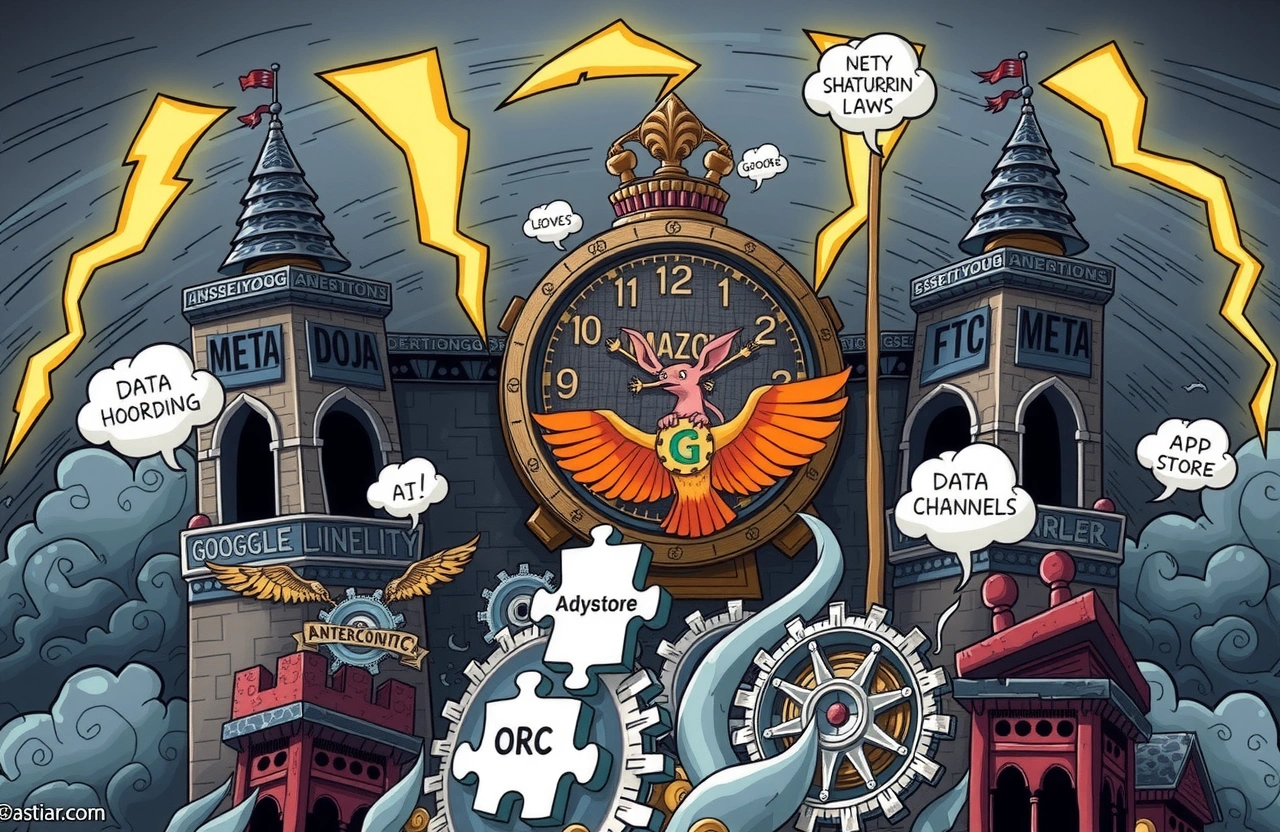The Gathering Thunderheads of Regulation
After decades of meteoric growth with minimal oversight, technology titans are facing unprecedented regulatory pressure. Global authorities appear poised to escalate enforcement actions throughout 2025, signaling the arrival of a sustained antitrust storm that will fundamentally challenge big tech’s operational frameworks. Legislative trends suggest regulators will target perceived monopolistic behaviors like predatory pricing, data hoarding, and ecosystem lock-in. Research from Georgetown Law indicates over 70 pending investigations globally. As Microsoft president Brad Smith recently testified to Congress: “We recognize that our industry needs updated rules.” This regulatory upheaval will inevitably reshape market dynamics and investment strategies across Silicon Valley.
Global Regulatory Frontlines Intensify
The European Union’s Double-Edged Sword
EU regulators lead the charge with landmark legislation including the Digital Markets Act (DMA) taking full effect in March 2024. Implemented through companies like the European Commission, these laws designate “gatekeeper” firms like Meta and Apple with strict interoperability requirements. Key DMA mandates include:
– Messaging app interoperability
– Third-party payment system access
– Equal ranking treatment for competitors
Fines for non-compliance reach a staggering 20% of global revenue, putting teeth into these regulations.
United States Applies Coordinated Heat
American enforcers are adopting a “whole-of-government” approach combining FTC, DOJ, and congressional actions:
– DOJ’s landmark Google search monopoly case heads to trial
– FTC suing to unwind Meta’s social media acquisitions
– Bipartisan bills targeting app store restrictions gain momentum
States attorneys general joined federal regulators in an unprecedented show of force. Judge Ketanji Brown Jackson’s recent remarks suggest courts now view big tech power through a historical antitrust lens.
Impending Business Model Disruptions
The antitrust storm threatens the fundamental economics of platform monopolies. Two emerging battlegrounds merit particular attention:
Revenue Diversification Imperatives
When Apple lost its App Store payment system monopoly following the Epic Games ruling, it demonstrated vulnerability in walled-garden models. Estimates suggest platform fee reductions could collectively cost big tech $40 billion in 2025 revenue. In response:
– Google diversifies into AI services
– Amazon leverages cloud infrastructure dominance
– Apple expands service ecosystem with exclusive content
Structural Remedies Take Shape
Regulators increasingly discuss business separations beyond fines:
Vertical vs Horizontal Splits
Likely scenarios:
– Separation of Amazon’s marketplace from operations
– Divesting Google’s ad tech stack from search
– Splitting Meta’s social platform and advertising arms
UK regulators advocate imposing “structural separation” for self-preferencing.
Corporate Survival Strategies
Tech giants deploy multifaceted responses to weather the regulatory tempest irrespective of specific outcomes:
Preemptive Self-Regulation
History shows concessions can temporarily appease regulators:
– Apple already permits alternative payment systems
– Microsoft opening Windows to third-party stores
– Amazon moderating seller-hostile fee structures
Data shows negotiated compromises reduce fines by 35% on average.
The AI Arms Race Acceleration
Forward-looking firms invest strategically:
– Alphabet redirects 18% R&D budget toward AI infrastructure
– Microsoft Azure aggressively courts AI startups
– Meta open-sources models to build ecosystem dependence
These build alternate growth engines beyond scrutinized business units.
Investment Implications
The antitrust storm will trigger market volatility and sector recalibration by 2025’s third quarter. Historical examples suggest:
Short-Term Turbulence
Key mitigation strategies:
– Diversify tech exposure beyond “MAAM” companies
– Hedging geopolitical regulatory risk through international bonds
– Positioning cash reserves for buying opportunities
Bank of America analysis shows tech stocks dropped 22% during the Microsoft antitrust case then rose 118% post-settlement.
Long-Term Opportunity Framework
Despite disruption, emerging winners could include:
– Companies facilitating compliance automation
– Infrastructure enablers for decentralized web tech
– Startups filling niches abandoned by distracted giants
Leading VC firm Andreessen Horowitz funds legal tech startups anticipating regulatory complexity demands.
Industry Transformation Timelines
Immediate Impacts (Q1-Q2 2025)
Expect:
– Aggressive FTC/DOJ injunction filings
– Emergency shareholder meetings
– Service disruption announcements
The regulatory siege requires crisis preparedness. Simple governance measures executives should implement:
– Centralize document retention protocols
– Preserve communications chain of custody
– Designate rapid-response legal strike teams
The Three-Year Regulatory Horizon
Industry analysts project:
– Fundamental fragmentation of app stores
– Commoditization of cloud infrastructure
– Rise of public benefit blockchain alternatives
External forecasts suggest 55% of Amazon’s retail profits become vulnerable over 36 months.
Navigating the New Landscape
The tech sector hasn’t faced existential regulatory threats of this magnitude since AT&T’s 1984 breakup. Corporate adaptation tactics must evolve beyond legal defenses towards fundamental model reinvention:
– Collaborate with regulators proactively
– Architect parallel revenue streams
– Develop interoperability demonstrators
This antitrust storm could catalyze innovation by dismantling artificial market barriers. Forward-thinkers — portfolio investors and entrepreneurs alike — must strategically reassess risk exposure while amplifying regulatory engagement. Subscribe to our weekly antitrust intelligence digest for ongoing analysis of these unfolding market-shaping developments.



